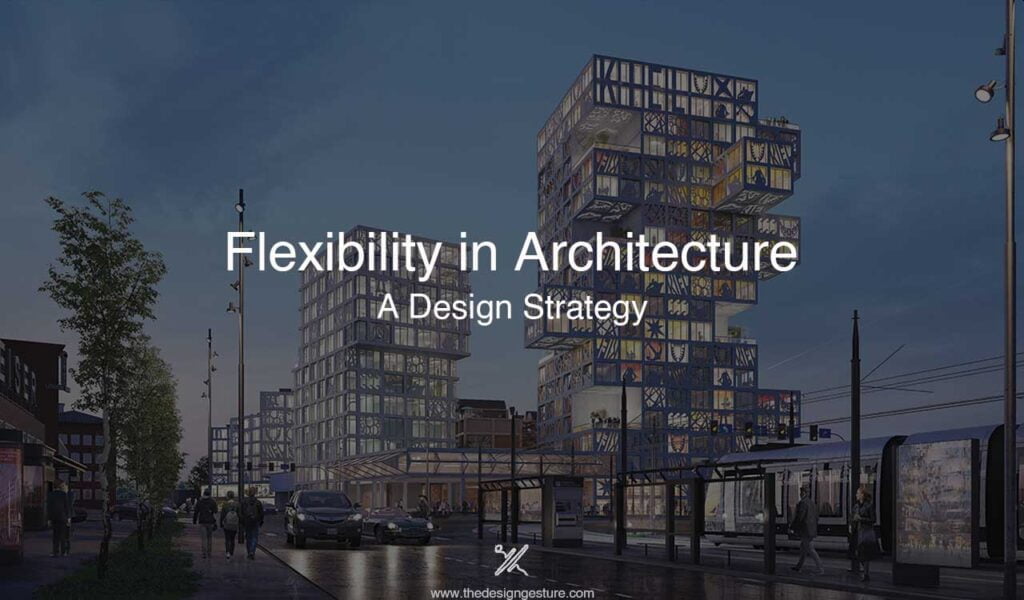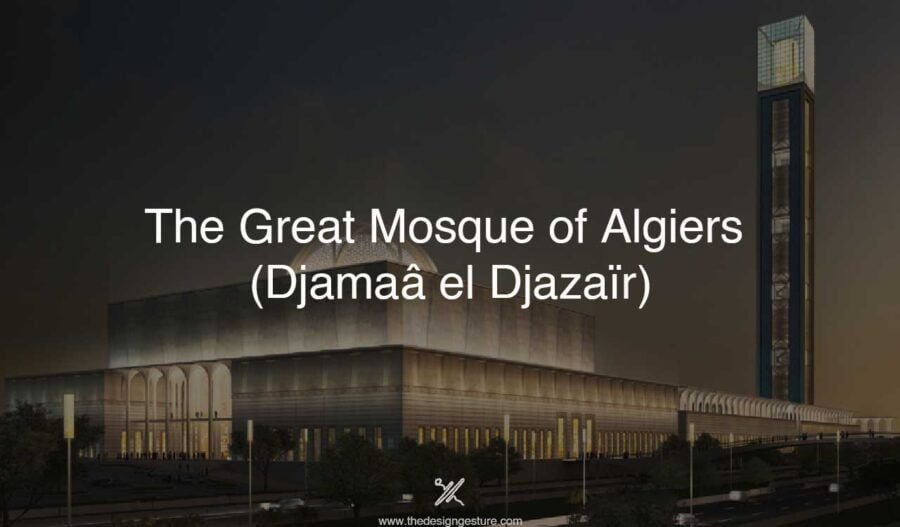Trends in architecture frequently alter as a result of shifts in cultural values. The trends in modern architecture had a significant impact on how people live and have strengthened the flexibility in design. Some architectural trends are continuing over a longer time, while others are gaining popularity. The front-line trends show what modern architecture stands to mean for our everyday lives and society at large. Stroll down nearly any road and you’ll discover plentiful proof that architectural tastes and styles change over the long haul.
Flexibility in design is one of them. Flexibility in the design of a structure and its components with the intent to manage its end-of-life more efficiently. Building flexibility can also be enhanced through the selection of a suitable design team that is going to be user-friendly structures. New development strategies and trends in artistic expressions, such as adaptive use and easy components with different material collections at the building stage, ensure building management systems. In this era, a new perspective is increasingly being debated the flexibility of design in architectural terms.
Table of Contents
What is Flexible Architecture?
In architecture, flexibility refers to the ability of a structure or area to be modified in a reasonable manner, allowing a building to evolve over the long run as the user needs change to accommodate market shifts and extend the project’s life. Architecture that struggles to adapt to change runs the risk of becoming stagnant.
In addition to providing characteristics that are naturally flexible, such as multi-use areas, open-plan offices, huge floor-to-ceiling heights, and high-capacity service voids, flexibility may also take the form of active flexibility, such as adjustable/moveable partitions. This can include taking into account fairly basic design options. For instance, it might be quite simple to add or subtract a bay to make a linear building larger or smaller, whereas a circular building might be exceedingly challenging to adapt without impairing the design’s integrity.
At the point when an architect designs, there are a large number of contemplations that generally guide the design process from concept to completion, and one such thought is a modern trend study, which is in many cases key to enhancing the extended utilization of the planned space.
There are numerous instances of abandoned buildings that were once regarded as symbols of modern architecture but fell into decay when human cultural developments contradicted the original purpose for which they were constructed. But there are also old structures that have been updated over the years to fit with evolving trends. The first step in overcoming the difficulty of developing a truly responsive and flexible architecture is to consider important instances of these historically successful structures, where the end-user was modified or re-envisioned at some time.
History of Flexible Architecture
For ages, this style of flexible architecture has been used. People lived in adaptable, and mobile shelters. These buildings serve as shelters that have been designed to adapt as best they can to different climatic situations. All of these shelters were the first step in the application of flexibility in architecture, from the Bedouin tents of Africa that were adapted to the desert climate, to the Asian yurts that are made up of separate parts and have geodetic wall formations and compression and tension rings of the ceiling, to the American tipi’s peculiar pointy shape that acts as a windshield.
In the 1950s, the word “flexibility” made its way into the vocabulary of architecture. Walter Gropius declared that “The architects have to imagine the building as a receptacle for the flow of the life which they are to serve”. In the 1950s and 1960s, Yona Friedman, a well-known architect, and theorist identified flexibility as a crucial idea in architecture. Friedman’s first statement, “Mobile Architecture,” presented a new form of mobility that he called the “general theory of mobility.” His definition of “mobile architecture” refers to individuals who are given freedom rather than the movement of the building itself.
The first Japanese architectural movement, Metabolism, emerged in Japan following World War II in 1960. The Nakagin Capsule Tower is one of the most well-known structures that evolved into a symbol of Japanese architecture. The structure is composed of modular components and capsules. The whole layout served as a model for adaptable, recyclable sustainable architecture.
By the 20th century, flexibility had developed into a notion that demanded consideration and thought in architectural design, and it had been used in many projects.
Basic Understanding
There are times when upgrading systems to comply with contemporary building regulations and norms is all that is necessary to convert existing structures for new purposes. In addition to being prudent from a financial standpoint, doing this protects the past and is intrinsically sustainable as part of whole-building and lifecycle planning. For example, families and family units are more diverse than ever, thus one person’s need for a traditional living room may be another person’s interest in a quiet office for their locally located business. Everyone gets access to adequate and useful places in both public and private contexts because of flexible design.
Phases of Flexibility in Architecture
We can characterize flexibility in terms of architecture in three phases, identifying with the measure of changes that happen and the level of perpetual quality of that change.
Adaptability
Adaptability is described as a building’s ability to accommodate different uses without changing the structure of the building. For example, moving furniture around or creating multipurpose areas. These don’t alter the area in a way of permanent change to the spaces that last forever.
Transformability
Transformability makes it possible to change interior and exterior spaces without having to do any new construction. It can be achieved either by moveable constructions moved around the environment without causing any significant changes or alterations or structures that are responsive and can respond to external weather. For example, portable restrooms, moveable retail space, temporary accommodation for huts, etc. Also, other retractable roofs over stadiums and other sporting facilities, and reaction structures such as floating buildings that rise and fall with changes in water level also belong under this category.
Convertibility
Convertibility deals with shifting functions, along with some construction. This demands some long-term adaptation. The introduction of flexibility and design must be anticipated in the planning phase itself while designing any structure. The design itself must take feasibility, research, and long-term ambitions into consideration. For example, providing enough room for future expansion, laying the groundwork for future growth, sizing up building services to accommodate growth, or, on the other hand, buying bundled building services that might be able to be resold if needs decrease.
Aiding Flexibility
Homes and other residential formats that can flexibly oblige quite a few inhabitants, and even better, develop with those occupants over a long time, are particularly engaging. Architects can aid flexibility by adaptability or by consolidating themes and materials all through. In a project’s planning stage, any projected flexibility should be incorporated into the building’s design. Initial flexibility studies and long-term plans should all be used to guide the creation of flexibility methods during the planning phase.
It is crucial to communicate with the project’s end users if they are known in order to determine the kind of flexibility that would be most advantageous to them. The easier the execution and the bigger the potential reward, the earlier decisions are made. As a project progresses, it can get more and more challenging to include flexibility-enhancing techniques. The architect can assess various solutions after the flexibility objectives have been established and evaluate them based on their applicability to the project, taking into account the site restrictions, programming requirements, available money, etc.
A cost-benefit analysis can assist in determining whether offering flexibility is genuinely in the client’s long-term interests or whether it is an unnecessary expense with a low likelihood of being used. No design can account for every potential demand in the future, so the design team must carefully consider which requirements are most likely to be advantageous and least disruptive.
Advantages of Flexible Architecture
Flexibility in design enables the encouragement of creativity and the exploitation of innovation while being more economically and environmentally viable. The goal of any design must undoubtedly be to create something that will endure throughout the years as an alluring place for people to congregate. Additionally, the structure will be in use for a much longer time and serve its purpose while accommodating end users in a far more flexible way than a rigid design could.
Conclusion
The built environment must be flexible as the world evolves and occupant needs change at an ever-faster rate. The challenge for architects is to meet and exceed these expanding requirements. The problems that designers are facing in this new era of the sharing and collaborative economy can be successfully solved through flexible architecture. They are making truly unique, adaptable places that are inherently utilitarian yet have a tremendous wow by using an agile approach.




